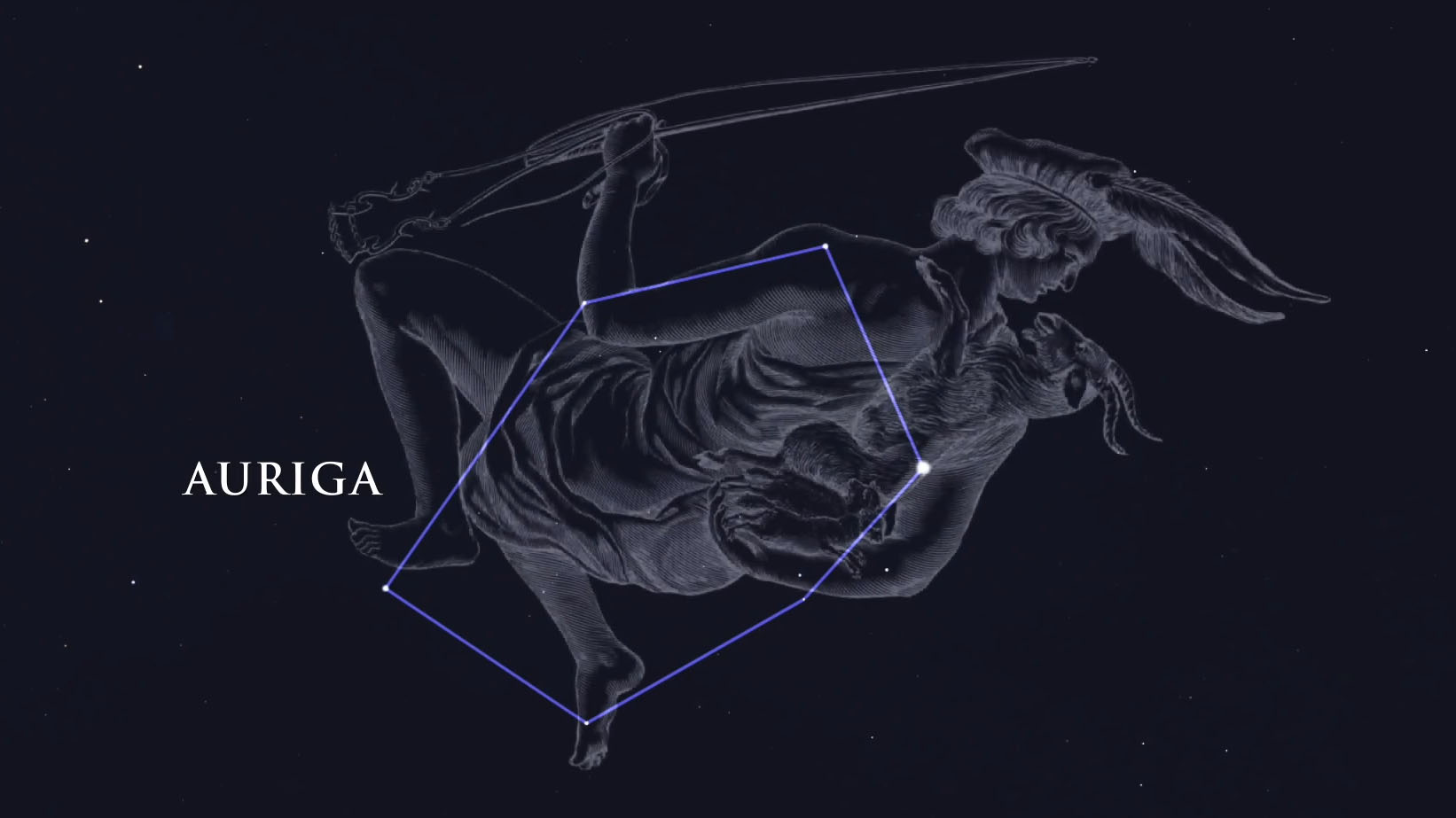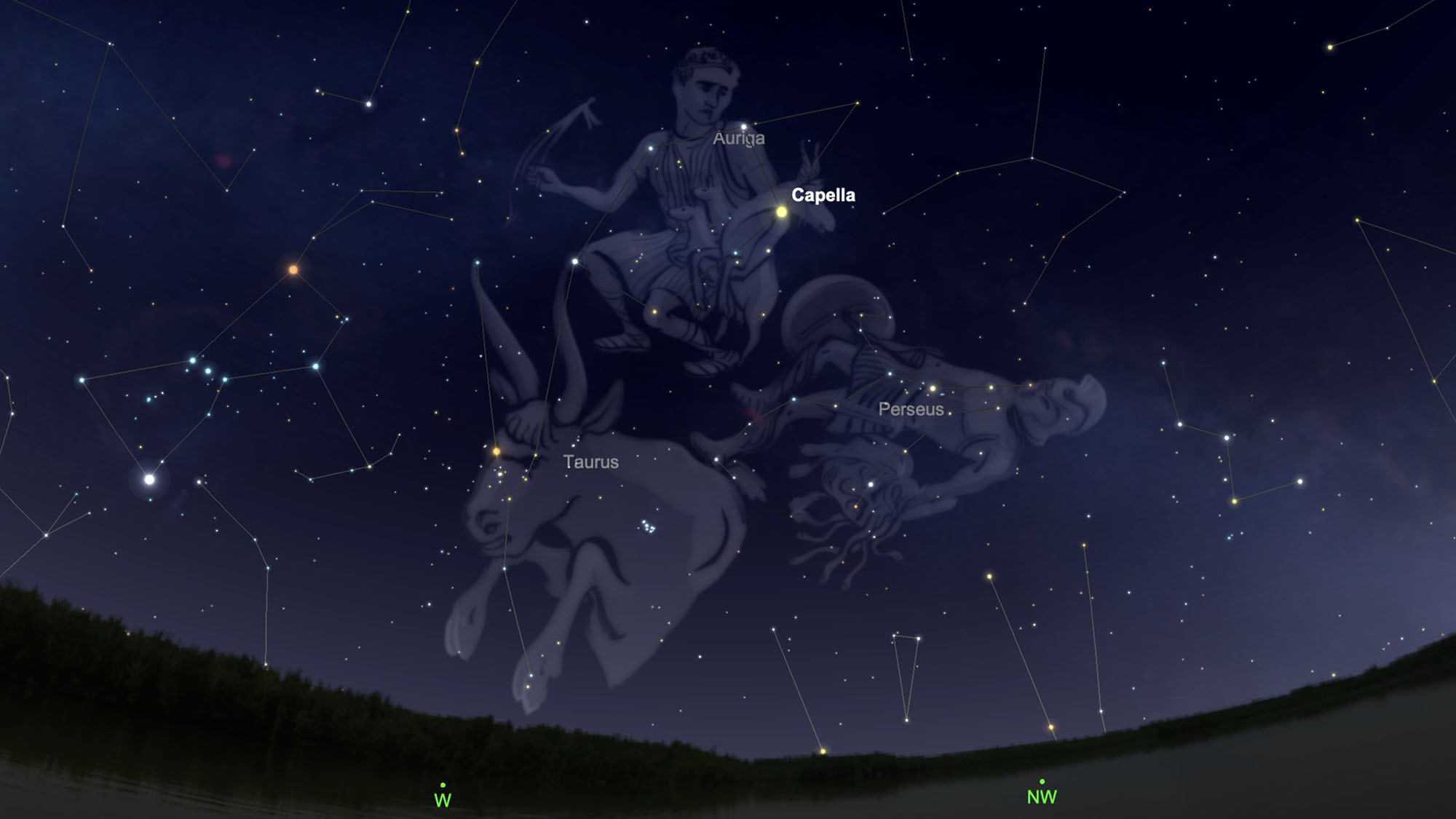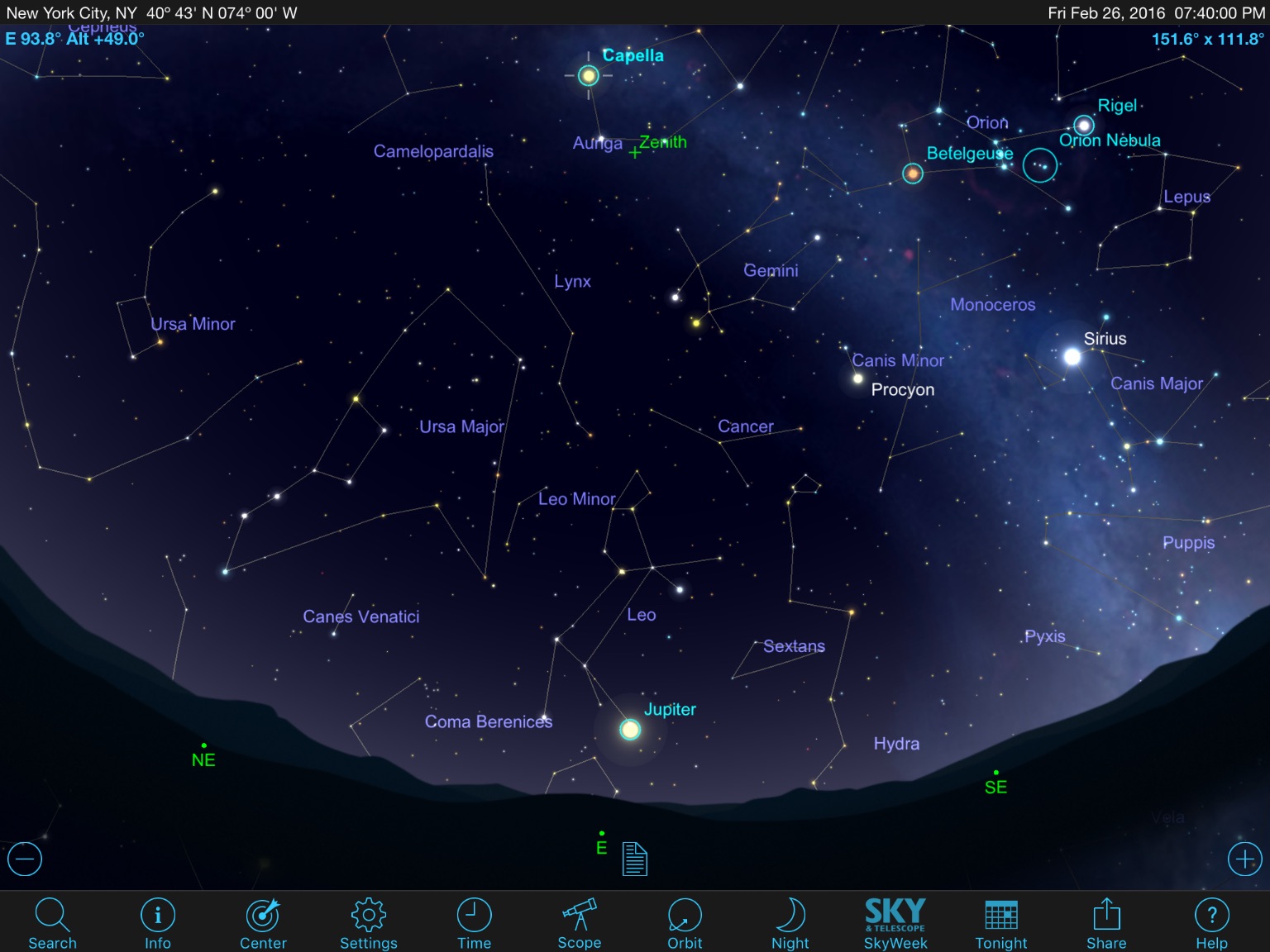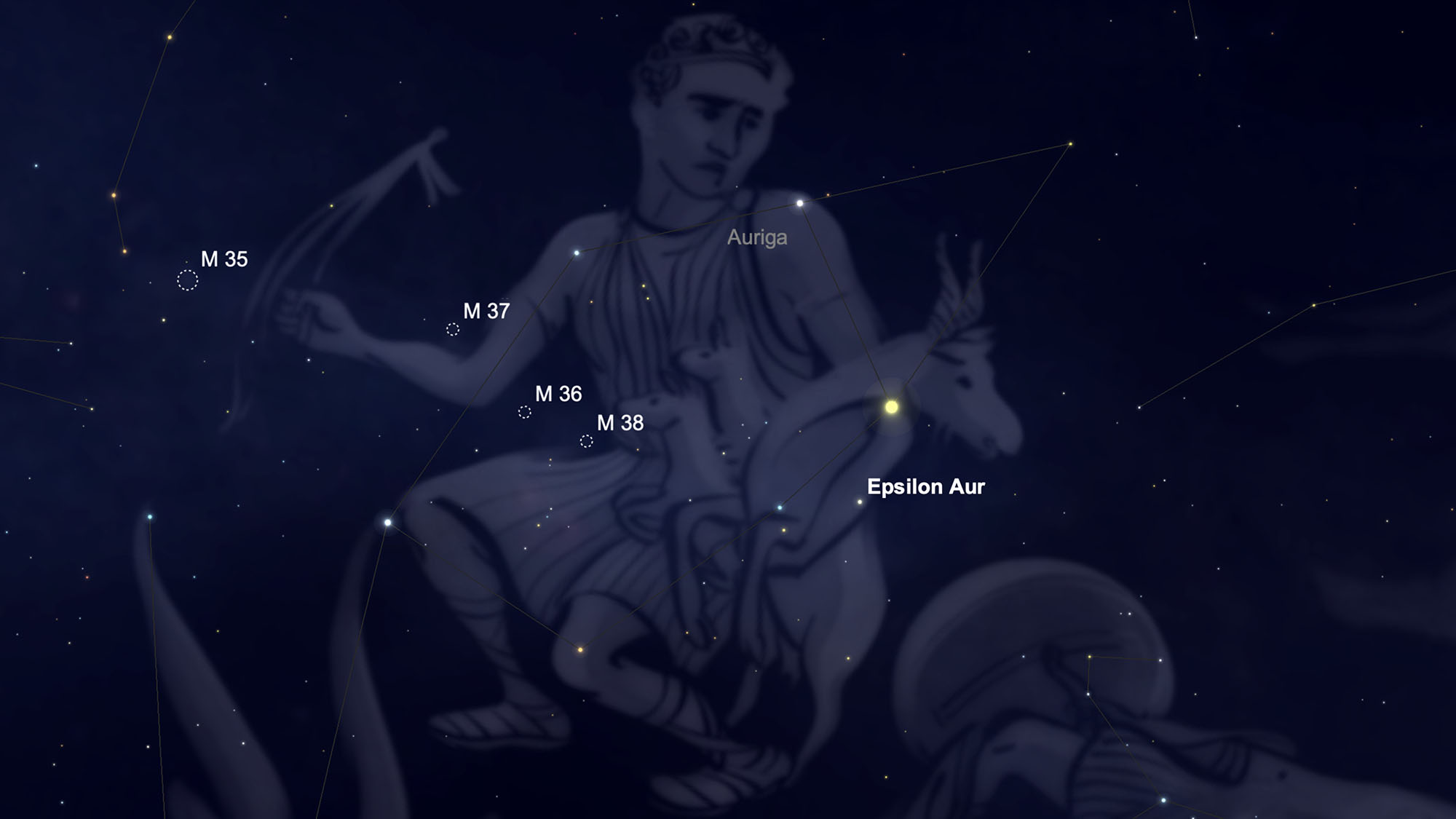Auriga constellation: Facts about the charioteer
Reference article: Facts about the Auriga constellation.

Auriga is a lesser-known constellation neighboring Gemini and Taurus that is visible in the northern hemisphere during the winter months. The mythological character Auriga is based on is often depicted holding a female goat and her kids, along with the reins of a chariot.
Who is Auriga?
The name Auriga simply means "charioteer" in Latin and there isn't full agreement on precisely which Greek or Roman myth the starry pattern is representing, according to the Society for Popular Astronomy. The most popular interpretation is that the chariot driver is Erichthonius, a legendary Athenian king and son of Hephaestus, the god of fire and metalworking, according to Ian Ridpath's Star Tales, which chronicles the stories behind constellations.
Erichthonius was rejected by his father but raised by the goddess Athena, patron deity of Athens, who taught him how to tame horses. He then became the first person to harness four horses in a chariot, potentially explaining Auriga's name.
But then, why the goats? According to Space.com skywatching columnist Joe Rao, the oldest legends state that Auriga was a goatherd and a patron of shepherds. The constellation is especially prominent in the winter and spring months, a time when shepherds traditionally spent nights out in the fields with their flocks.

How to spot Auriga
Auriga can be found using the easily recognizable constellation Orion as a guide. At times when Auriga is high in the sky, especially around February, the two constellations will appear in the west-northwest sky a few hours after the sun sets, as seen in star charts such as this one from In-The-Sky.org.
Immediately above Orion is Taurus, the bull, who is often depicted charging into the famous huntsman. Above that will be a pentagon shape of stars, one of which is the bright and golden star known as Capella, which is Latin for "she-goat." These stars make up the bulk of Auriga.
Technically, the bottommost star in that pentagon is El-Nath and it belongs in Taurus. But in some star charts, Auriga and Taurus share the star, according to Ridpath.

Capella and her kids
Capella is an interesting entity in its own right, being the sixth brightest star visible from Earth. It is actually four stars: two large binary stars, and two fainter binary dwarfs, located a cosmically close 43 light-years away.
The main binary stars are both yellow and roughly the sun's temperature, though they're about 10 times larger in diameter than our central star. Two faint red dwarfs orbit about a light year away from this pair.
The triangle of stars next to Capella are considered to be the goat's kids. The top point of the triangle, which is nearest to Capella, is called Epsilon Aurigae or Almaaz. It is a supergiant star with a companion that is enshrouded in a huge disk of gas and dust. Once every 27 years, the companion passes in front of Epsilon Aurigae and its brightness significantly drops.
The other two stars in the triangle are called the Haedi and technically, they are Capella's only kids, but Epsilon Aurigae is so distinctive that it is often also considered an honorary kid, according to the Society for Popular Astronomy.

Auriga's other notable stars
Auriga also contains three star clusters, or collections of hundreds or thousands of stars, known as M36, M37 and M38. They are visible with binoculars as fuzzy patches in the constellation.
Providing an interesting crossover, Capella and four other stars inside of Auriga were known in ancient China as Wuche or Wuju, meaning the Five Chariots, according to EarthSky magazine. The stars were said to govern the harvest of the five main cereal crops grown in China at that time, according to Ridpath.
Additional resources:
- Read about the lives and types of stars.
- Learn more about the constellations and their symbols from NASA's Space Place.
- Find out how the constellations got their names.
Join our Space Forums to keep talking space on the latest missions, night sky and more! And if you have a news tip, correction or comment, let us know at: community@space.com.
Get the Space.com Newsletter
Breaking space news, the latest updates on rocket launches, skywatching events and more!

Adam Mann is a journalist specializing in astronomy and physics stories. His work has appeared in the New York Times, New Yorker, Wall Street Journal, Wired, Nature, Science, and many other places. He lives in Oakland, California, where he enjoys riding his bike. Follow him on Twitter @adamspacemann or visit his website at https://www.adamspacemann.com/.
-
rod "Auriga also contains three star clusters, or collections of hundreds or thousands of stars, known as M36, M37 and M38. They are visible with binoculars as fuzzy patches in the constellation."Reply
These are very nice open star clusters in small telescopes. I view using my 90-mm refractor and 10-inch Newtonian.










